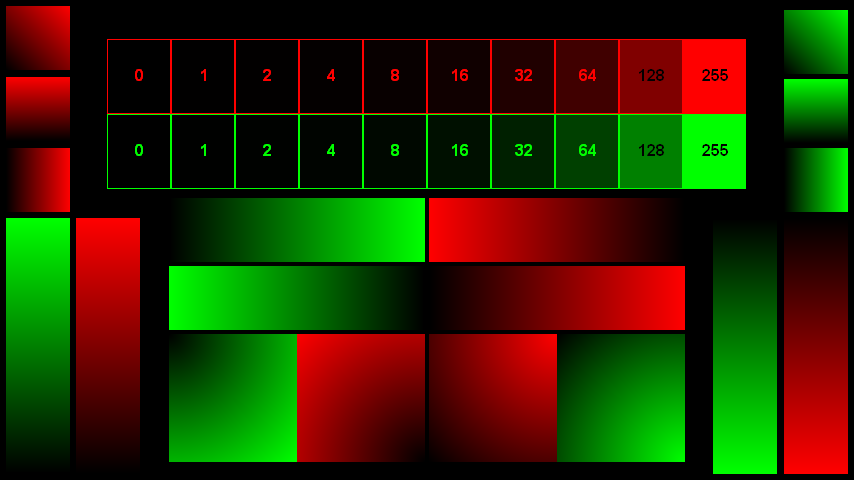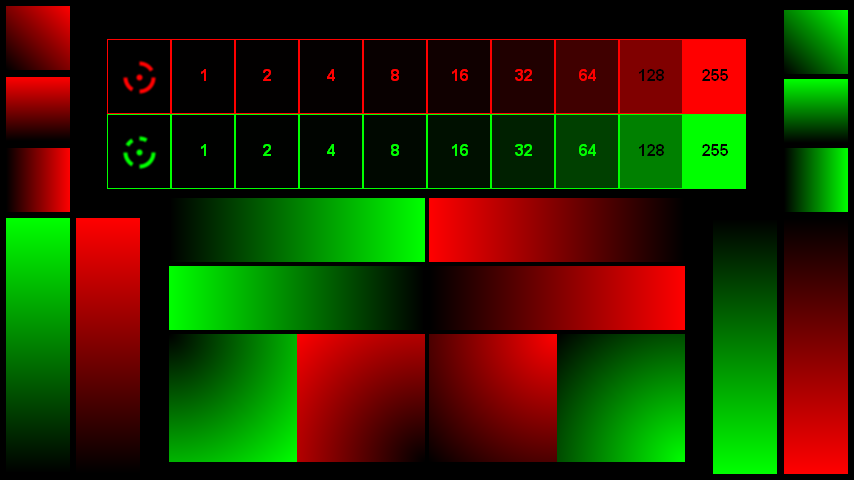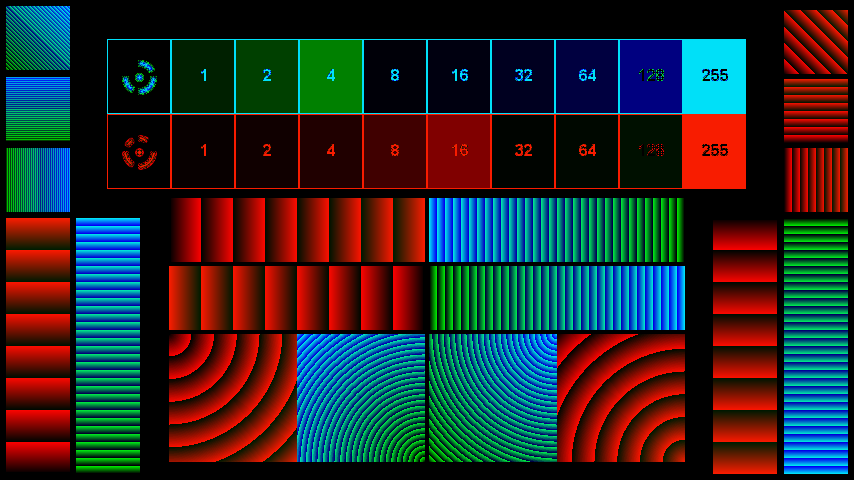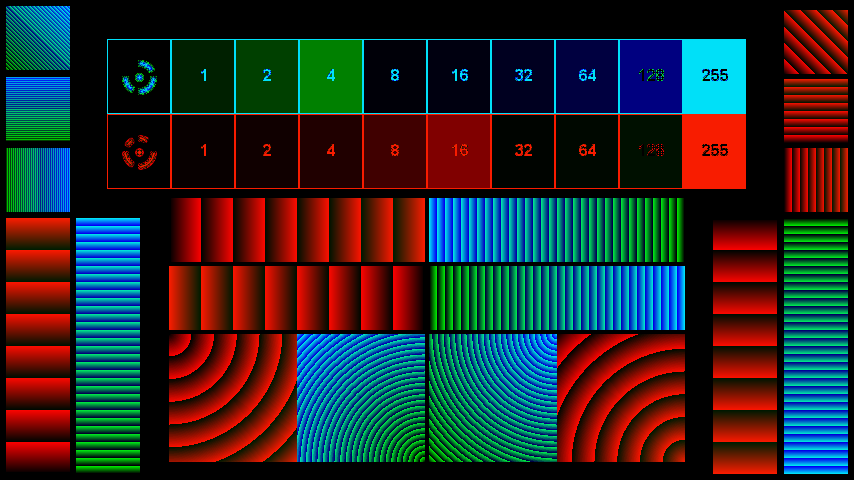Other Parts Discussed in Thread: DLPDLC-GUI
Hello all,
I have been working on understanding how the Splash Pattern mode works and how to use it.
Image artifact issue
One of the major issues I found with this mode is that there are some processing artifacts impacting some of the image bit planes.
I am using the following test card, in which the green channel is mapped to the upper byte of a splash screen data word and the red channel is mapped to the lower byte.
As you may see from the projected splash patterns (8-bit mode, 1 pattern), in addition to the artifacts, there is a 3-bit shift between the expected bit location and what the DLPC347x chipset interprets. This may however easily be fixed when generating the splash image data, but the documentation does not state which bits from the image are used in which bitplane when projecting in 8-bit splash pattern mode.
The image processing artifacts are especially visible when projecting a single bitplane (1-bit mode, 1 pattern):
When using the 8-bit mode and projecting 2 patterns (not photographed here), the red source image patterns are projected correctly, while the green source image patterns are distorted.
Also, there is no such issue when projecting in standard Splash Screen Mode:
To me, it seems that even though the image processing algorithms (LABB, CAIC) are disabled, some processing is still taking place and producing artifacts on the projected image. If I enable LABB processing, the artifacts become much worse but still only affect the green source patterns (and not the red ones !), even with all sliders maxed out.
What are the possible workarounds for this problem ? Right now I only need to project static 8-bit 2D patterns, so I could live with only using the "red" channel from my images - unfortunately the only way to display that would be to use the 8-bit mode with 2 patterns with a blanked out "green" channel, but this induces heavy flicker !
I also have a couple questions regarding this mode :
- Is it possible to pause and manually advance the pattern sequence, as in the Internal Pattern Mode ?
- Is it possible to specify a single pattern to expose from a given splash screen (i.e. display an arbitrary bitplane or only the second 8-bit pattern) ?
- Is it possible to disable the linear image scaling algorithm (i.e. use nearest-neighbor interpolation) ?
Best regards,
Guillaume STRUB










